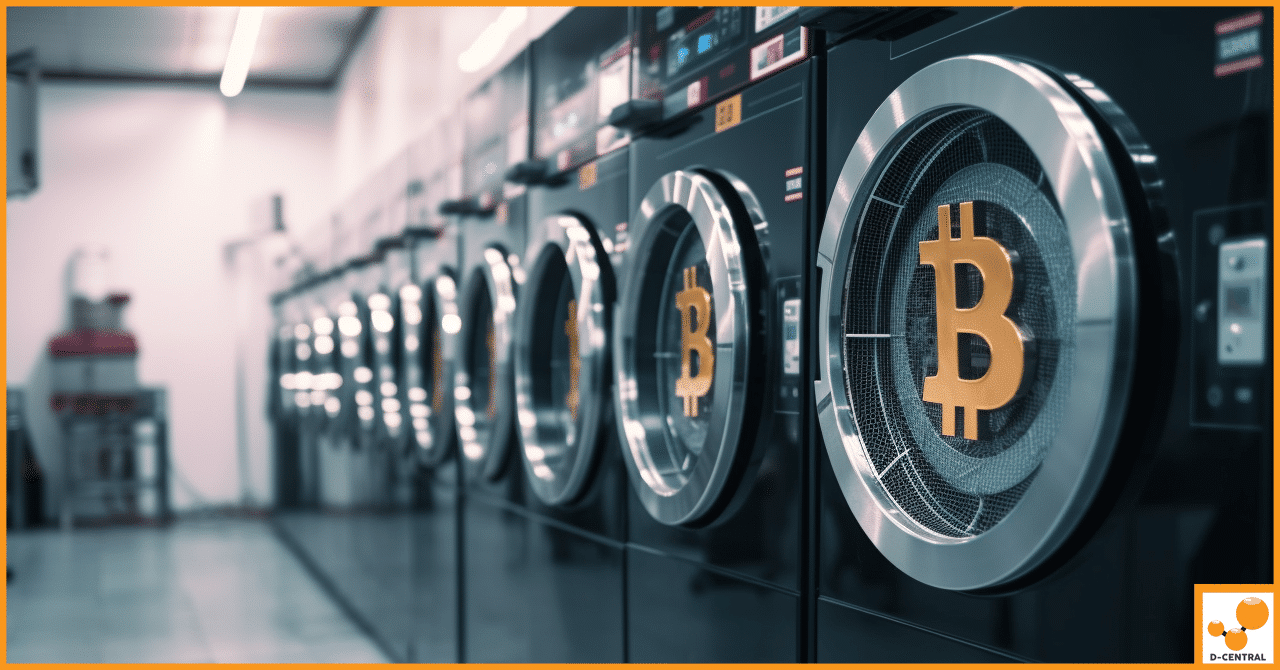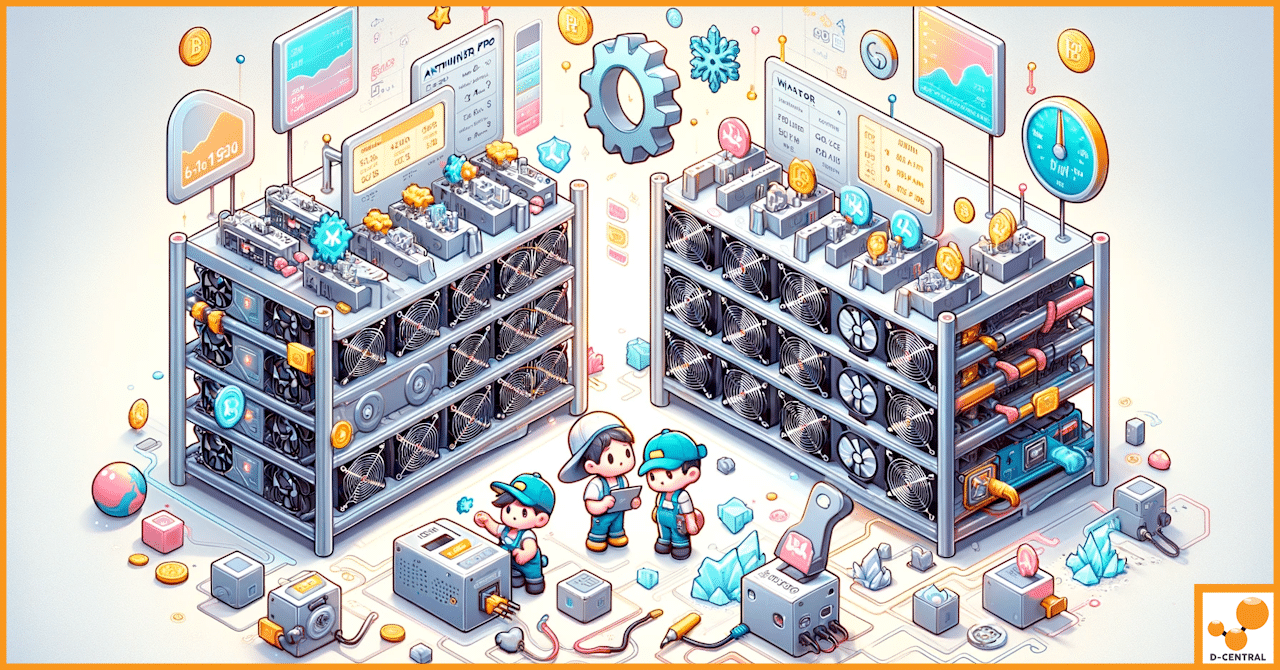
Bitcoin Meets RuneScape’s Party Hats
In today’s digital era, the concept of value and wealth has transcended beyond the tangible boundaries of the physical world,
4479 Desserte Nord Autoroute 440, Laval, QC H7P 6E2

Welcome to a revolutionary intersection of two distinct yet surprisingly synergistic industries: Bitcoin Mining and Commercial Laundries. This exploration into the unprecedented possibilities that lie at the convergence of these two sectors is certain to engage Bitcoin maximalists, cypherpunks, and cryptocurrency enthusiasts alike.
First, let’s delve into Bitcoin Mining, a key concept central to our discussion. Bitcoin mining is an integral part of the Bitcoin network. Miners utilize powerful, specialized hardware to solve complex mathematical problems. The first miner to crack these problems earns the right to add a new block of transactions to the blockchain, thereby maintaining the decentralized and secure nature of the network. In return for their services, miners are rewarded with newly minted bitcoins and transaction fees. However, this process is far from easy. The competition is fierce, the calculations are intense, and the energy consumption is high, leading to significant heat generation.
Turning our attention now to the other half of this intriguing partnership, Commercial Laundries are businesses that provide laundry services on a large scale. Serving a diverse clientele, including hotels, hospitals, and restaurants, these operations handle enormous volumes of laundry daily. This demanding workload necessitates efficient, reliable, and, most importantly, heat-intensive equipment to wash, dry, press, and finish the fabrics.
When examined closely, a common thread binds these disparate industries: the central role of energy and, specifically, heat. Could there be a symbiotic solution to address the high-energy consumption in Bitcoin mining and the heat requirements of commercial laundries? This compelling question forms the basis of our exploration. Stay with us as we dive deeper into this innovative concept and its potential implications for sustainability, operational efficiency, and economic growth.
A pivotal aspect of the Bitcoin mining process is the generation of heat, a byproduct of the energy-intensive calculations performed by the mining hardware. Let’s unravel the intricacies of this phenomenon and understand the challenges and potential opportunities it presents.
At the heart of Bitcoin mining are Application-Specific Integrated Circuits (ASICs). These powerful machines are designed explicitly for mining, and they perform their complex computations at impressive speeds. However, this computational prowess comes with a cost: substantial energy consumption. The more energy these ASICs consume, the more heat they generate. Large-scale mining operations can produce a significant amount of waste heat, necessitating dedicated cooling systems to prevent damage to the hardware.
Currently, the mining industry primarily manages this waste heat through traditional cooling methods, such as air and liquid cooling systems. Some operations are even strategically located in colder climates or underground, leveraging the natural environment to aid in heat dissipation. However, these methods can be energy-intensive, adding to the operational costs and environmental impact of the mining process.
A novel and sustainable approach is emerging in the face of these challenges: the idea of harnessing the waste heat generated by Bitcoin mining for other purposes. Rather than treating this heat as a mere byproduct to be managed, we can view it as a valuable resource with potential applications in other industries. One such application, which we’ll be examining closely, is the use of this waste heat in commercial laundries. This innovative concept not only promises to address the problem of waste heat management in Bitcoin mining but also presents an intriguing opportunity for resource efficiency and cost savings in commercial laundry operations.
Commercial laundry operations serve a critical role in a multitude of industries, from hospitality and healthcare to food service and beyond. Let’s delve into the inner workings of these operations and their energy requirements to gain a better understanding of their potential interplay with Bitcoin mining.
Commercial laundries are workhorses, processing vast quantities of laundry daily to meet the demands of their clients. This involves a sequence of processes, including washing, drying, pressing, and finishing, each with its own set of equipment and energy needs.
Industrial washing machines, dryers, and pressing machines are integral to commercial laundry operations, each consuming significant amounts of energy. Washing machines utilize electricity to heat water, agitate clothing, and drive their spin cycles. Dryers employ heat to evaporate moisture from the garments, completing the drying process. Finally, pressing machines use both electricity and heat to remove wrinkles and prepare the garments for delivery. All these processes cumulatively make commercial laundries highly energy-intensive operations.
Heat is especially critical in these operations. It is essential for effective washing, where hot water helps remove dirt, stains, and bacteria. The drying process, too, heavily relies on heat for rapid and efficient moisture evaporation. Further, in the pressing and finishing processes, heat is required to ensure the final product meets the necessary quality standards. Consequently, commercial laundries are heavily dependent on energy sources that provide heat.
Typically, these operations rely on electricity, natural gas, and other fossil fuels to power their equipment and generate the needed heat. These traditional energy sources, while effective, have significant cost implications and environmental impacts, contributing to greenhouse gas emissions and other forms of pollution. As a result, commercial laundries are increasingly feeling the pressure to identify more sustainable and cost-effective energy solutions. Harnessing waste heat from Bitcoin mining operations could provide a valuable alternative, helping these operations reduce their energy costs and environmental footprint while maintaining the necessary heat levels for their processes.
The waste heat generated by Bitcoin mining operations could be a game-changer for commercial laundries. By leveraging the heat exchange process — the transfer of thermal energy from one medium or system to another — these two industries could foster a synergistic relationship that delivers multiple benefits.
In practical terms, heat exchange in this context refers to transferring the waste heat generated by Bitcoin mining operations to commercial laundries that require heat for their operations. This innovative concept holds the potential for considerable advantages for both parties, including cost savings, increased sustainability, and a decreased environmental footprint.
There are several determinants for the viability of this heat exchange arrangement. They include the proximity of the mining and laundry operations, the quantity of heat generated by the mining hardware, and the heat requirements of the laundry processes. With the right alignment of these variables, it’s feasible to design and implement heat exchange systems that effectively capture and transfer waste heat for use in commercial laundries. This could involve setting up heat exchangers, creating piping infrastructure, and incorporating control systems to ensure efficient heat transfer and utilization.
While the concept of utilizing waste heat from Bitcoin mining operations in commercial laundries is relatively novel, we can find successful examples of similar integrations in other sectors. Some data centers, for instance, have partnered with local businesses or municipal systems to harness their waste heat for heating buildings or producing hot water. These instances showcase the potential for creative and sustainable solutions, encouraging us to explore further synergies between Bitcoin mining and commercial laundries. This kind of partnership could boost the sustainability of both sectors and lead to significant reductions in operational costs.
Commercial laundries stand to benefit significantly from harnessing the waste heat generated by Bitcoin mining operations. This would not only support their operational efficiency but also enhance their environmental sustainability. Here’s a step-by-step guide on how commercial laundries can embark on this transformative journey:
The application of these strategies will facilitate the successful implementation and management of a waste heat utilization project, maximizing the benefits for both Bitcoin miners and commercial laundries.
Harnessing the waste heat from Bitcoin mining presents a prime opportunity for commercial laundries to operate in a more environmentally sustainable and economically beneficial manner. Let’s explore these advantages in more detail:
Harnessing waste heat from Bitcoin mining for commercial laundries signifies a considerable step towards a sustainable future. It emphasizes the importance of innovative solutions in tackling environmental challenges while creating economic advantages for businesses.
While the idea of repurposing waste heat from Bitcoin mining for commercial laundry operations is compelling, it’s not without challenges and limitations. These can broadly be categorized as geographical, regulatory, and technological.
Despite these challenges, the potential benefits of harnessing waste heat from Bitcoin mining for commercial laundry operations are significant, warranting further exploration and investment into solutions that can overcome these obstacles.
Harnessing waste heat from Bitcoin mining for commercial laundry operations is a forward-thinking approach that represents an innovative intersection of two seemingly disparate industries. This concept holds substantial potential for environmental and economic benefits.
On the environmental front, repurposing waste heat reduces the energy footprint of both industries, contributing to sustainable energy use and helping to mitigate the global climate crisis. Economically, it promises operational cost savings for both Bitcoin miners and commercial laundries by reducing energy expenditure and creating potential revenue streams.
However, the path towards this integration isn’t without hurdles. Geographical disparities, regulatory issues, and technological complexities could pose significant challenges to widespread adoption. These include the need for proximity between Bitcoin mining farms and laundries, navigating varying regional regulations, and implementing efficient heat transfer infrastructure.
Nevertheless, the prospect of overcoming these challenges is promising, especially considering successful heat integration examples in other industries. With increasing focus on sustainable practices, coupled with technological advancements, such integration between Bitcoin mining and commercial laundries is more feasible than ever.
As we move forward, it will be essential for key stakeholders in both industries to collaborate, exploring new technological solutions and engaging in policy dialogues to facilitate this energy-efficient integration. In the long term, this could form part of a broader trend towards creative, cross-industry solutions for sustainable energy use, setting a precedent for other sectors to follow. The fusion of Bitcoin mining and commercial laundry operations in this manner, therefore, could be just the beginning of a broader journey towards more sustainable industrial practices.
Q: What is Bitcoin mining and how does it generate heat?
A: Bitcoin mining is the process of validating transactions on the Bitcoin network and adding them to the blockchain, the public ledger of all Bitcoin transactions. This process involves solving complex mathematical problems, which requires significant computational power. The energy-intensive nature of these calculations results in the generation of a substantial amount of waste heat.
Q: What is the energy consumption of commercial laundry operations?
A: Commercial laundry operations are highly energy-intensive. They require substantial amounts of energy for heating water, running machines, and drying clothes. This leads to high energy costs and contributes to the carbon footprint of the industry.
Q: How can waste heat from Bitcoin mining be used in commercial laundries?
A: Waste heat from Bitcoin mining can be harnessed and repurposed to provide heat for commercial laundry operations. This could potentially reduce the energy costs for laundries and mitigate the environmental impact of Bitcoin mining.
Q: What are the potential challenges in implementing waste heat utilization?
A: Challenges include geographical disparities, as close proximity between Bitcoin mining operations and laundries is needed for efficient heat transfer; regulatory hurdles, as different jurisdictions may have varying rules regarding waste heat utilization; and technological complexities involved in capturing and transferring the waste heat.
DISCLAIMER: D-Central Technologies and its associated content, including this blog, do not serve as financial advisors or official investment advisors. The insights and opinions shared here or by any guests featured in our content are provided purely for informational and educational purposes. Such communications should not be interpreted as financial, investment, legal, tax, or any form of specific advice. We are committed to advancing the knowledge and understanding of Bitcoin and its potential impact on society. However, we urge our community to proceed with caution and informed judgment in all related endeavors.
Related Posts

In today’s digital era, the concept of value and wealth has transcended beyond the tangible boundaries of the physical world,

Are you curious about Bitcoin mining but feel overwhelmed by its complexity? Look no further! D-Central is here to transform

In the rapidly evolving world of cryptocurrency mining, selecting the right hardware is not just a matter of preference but